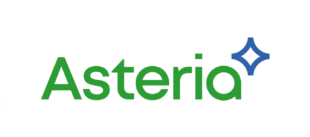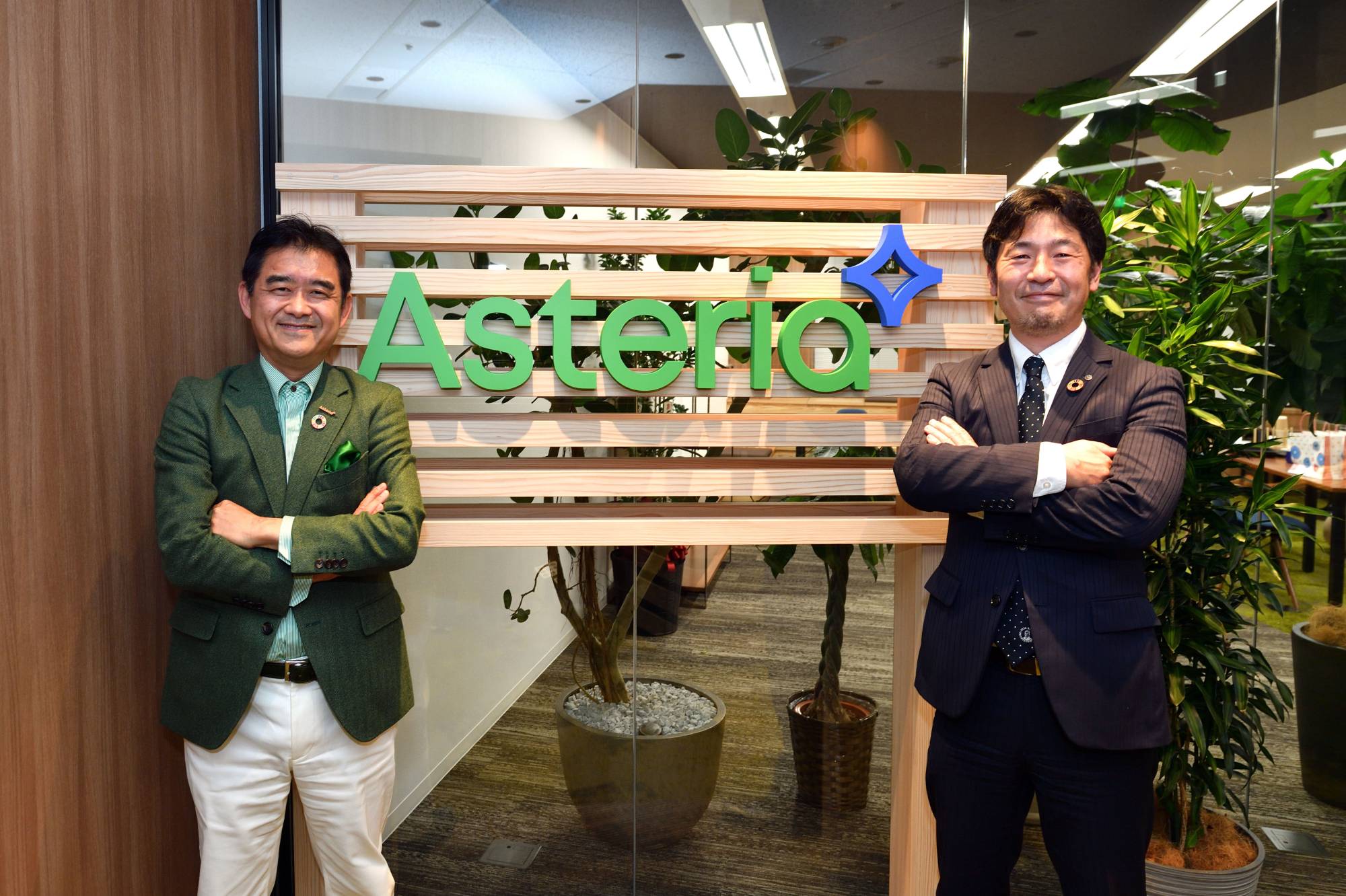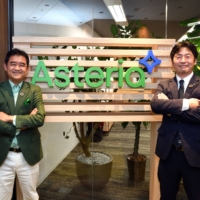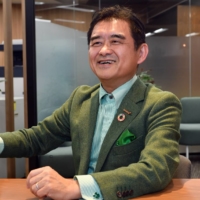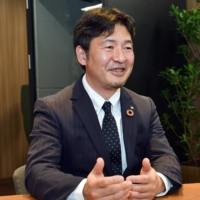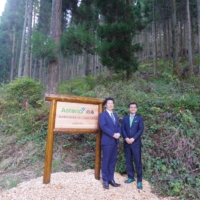While the United Nations sustainable development goals present the diverse challenges the world faces, it is important that companies and municipalities examine what exactly they can do and who they can partner with to maximize the impact of their actions, fully aware that what they do today may ultimately lead to global sustainability.
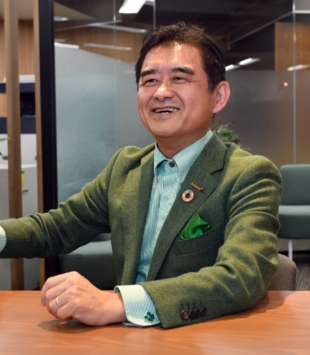
Seiji Watanabe, mayor of the town of Oguni, Kumamoto Prefecture, and Pina Hirano, president and CEO of Asteria Corporation., discussed how a collaboration between the town and a private company could help in solving regional problems through conservation of natural resources and support for digitalization, among other efforts. They said they felt this would be an ideal partnership to pursue the SDGs, in a recent online interview with The Japan Times.
Oguni is a rural town with fewer than 7,000 residents. Its weather is typical of Japan’s cold uplands, with a relatively low average temperature of 13 degrees C, frequent rain and high humidity, which is suitable for nurturing healthy forests. Mountains and forests make up about 80% of the town’s area.
Oguni is also the hometown of Shibasaburo Kitasato, the physician and bacteriologist known as the father of modern medicine in Japan whose portrait is scheduled to appear on the ¥1,000 note from fiscal 2024. The Shibasaburo Kitasato Museum, part of which is a renovated home where Kitasato was born in 1853 and a guesthouse and library he built later, has become one of the town’s tourist destinations along with area hot springs and Nabegataki Falls.
Thanks to its abundant natural resources, the town is also advanced in the use of geothermal power and other renewable energy sources. Watanabe explained that the town itself is becoming a popular destination for school trips and study tours to learn about the effective use of natural resources. But Oguni is also dealing with problems common to many other rural towns in Japan, such as depopulation and an increase in natural disasters.
Asteria, a listed high-technology company based in Tokyo, develops and distributes software, platforms and services that connect systems and devices that empower anyone to design and deploy custom solutions without requiring specialized coding knowledge. “To do this, we are always aware of global standards, including the SDGs,” Hirano said, noting that Asteria’s sustainability efforts cover 11 of the U.N.’s 17 goals.
Oguni and Asteria launched their first collaboration in 2015. To celebrate the acquisition of the first 5,000 clients for ASTERIA Warp, one of the company’s main products, “We intended to plant 5,000 trees, thinking that this would best represent our corporate color of green,” Hirano said.
But they soon discovered during their planning talks that Oguni was struggling with a forest-management problem.
Due to intense demand for cheap imported lumber, the domestic forestry industry has been shrinking, leaving little manpower and funds for maintaining and preserving the nation’s forests.
“‘Then that is where we should help,’ we thought, and began looking for a partner to do that,” Hirano said, explaining how Asteria and Oguni made first contact. In addition to donating money for forest management in Oguni, Asteria used cedar for the interior decoration of its office and produced original calendars and SDG badges using wood thinned from the town’s forests.
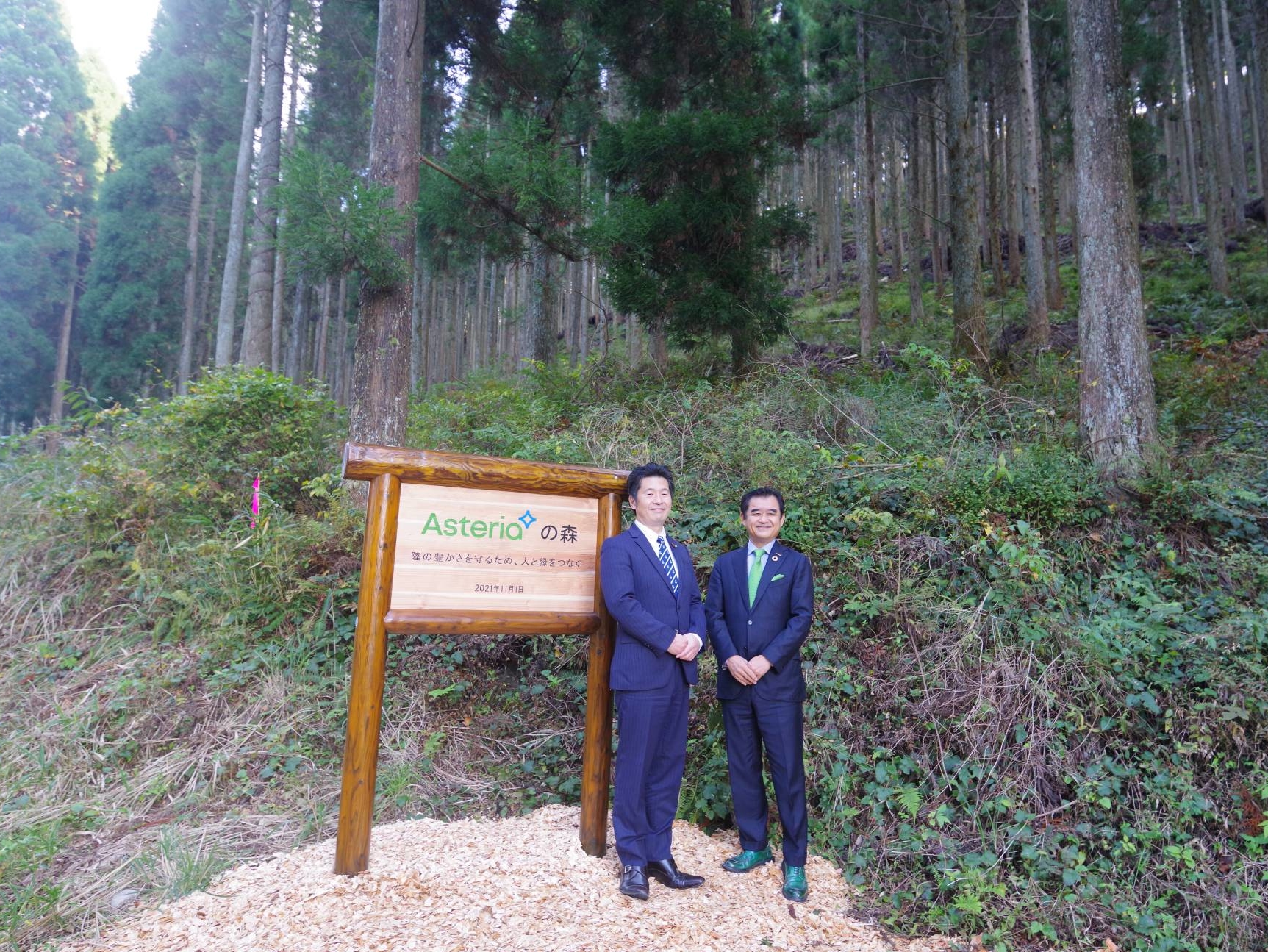
In 2017, this collaboration became a certified project under the corporate version of the government’s furusato nōzei (hometown tax donation) program. When companies make donations to support the regional revitalization plans of local governments, they can receive tax credits. This means they get to reap economic benefits while supporting regional development and helping to achieve the SDGs at the same time.
Hirano pointed out that the good thing about this program is that companies are donating to specific plans that are documented and certified, which ensures their feasibility. Recently, Asteria received a minister’s award from the Cabinet Office for its contributions in promoting the tax donation program.
The collaboration between Oguni and Asteria extends to disaster measures based on Platio, one of Asteria’s solutions for making mobile applications without coding. Due to its vast area and dwindling population, Oguni had staffing problems. To move away from older, less-efficient methods of data-sharing, such as phone and paper, the town adopted a damage-status application created with Platio last year to improve and speed up reporting on areas hit by disasters and other emergencies. This was made possible by the close relationship nurtured by Oguni and Asteria and the meetings they held not only to run the forest-maintenance project, but also to discuss other regional challenges. “Being able to learn about the challenges that the region faces directly from the people who live there helps us create and provide a new value together that is uniquely helpful to the region,” Hirano said.
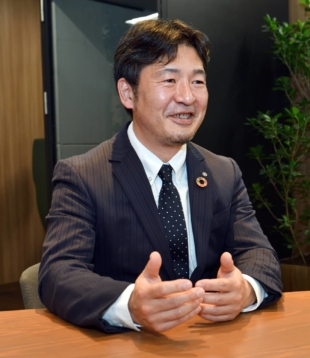
Watanabe explained that the increasing rainfall in the area, which is deemed to be caused by climate change, is causing more frequent disasters, such as landslides. The reporting application makes it easier to share information using geo-tagged pictures and text, reducing the number of people needed for inspection and reporting, the mayor said. This is because the application helps pinpoint a location and spread the information swiftly, he explained.
“When there is bush fire for example, we need to go and fight it immediately, but it is often hard to pinpoint the location on the map. It is even harder to explain it verbally via public announcements. Place names rarely help in vast remote areas,” Watanabe said. Efficiency in sharing information directly leads to more lives being saved.
The app was created in just one day by two members of the town government, neither of whom had IT backgrounds. “This means there is no need to hire or bring in professional engineers to do this,” Hirano said.
“There are things that become visible only after you start using it. The more we use and update it, the better and more useful it becomes,” Watanabe added.
The proliferation of natural disasters is a common challenge that is being faced by many countries and regions feeling the effects of climate change. Similarly, depopulation and aging are problems affecting other rural areas in Japan and throughout the world. Partnerships such as the one between Oguni and Asteria could provide clues on how to build an effective public-private partnership, and use the power of technology and digital transformation to solve regional issues. Such clues can be expanded, adjusted and applied to other areas with similar problems, which may eventually lead to the achievement of a more sustainable world.
Since its foundation, Asteria has been connecting systems, people, things and minds to the future, contributing to the realization of a sustainable society and serving as a green (our corporate color) company. While working to increase diversity and dedicating ourselves to environmental conservation, we have been managing environmental, social and governance factors at a higher level through flexible working styles and forest preservation activities.
To read more about our ESG activities, please see our “FY2021 ESG Report” via the link or QR code below.
URL:https://www.asteria.com/jp/pdf/ir/ipr220328_01_en.pdf

Company name:
Asteria Corporation
Stock listed: Tokyo Stock Exchange 1st Section (3853); Prime Market under TSE New Market Segments (from April 4)
Founded: September 1998
Offices: Japan, U.S., U.K., China, Singapore
Businesses:
・Development of enterprise software focusing on “connectivity”
・Strategic design consulting (This Place)
・Investment (Asteria Vision Fund)
Capital: ¥2,275,343,330 (as of Dec. 31, 2021)
Asteria English IR website: https://www.asteria.com/jp/en/ir/
Asteria IR: [email protected]
Asteria IR on Twitter: @Asteria_ir
